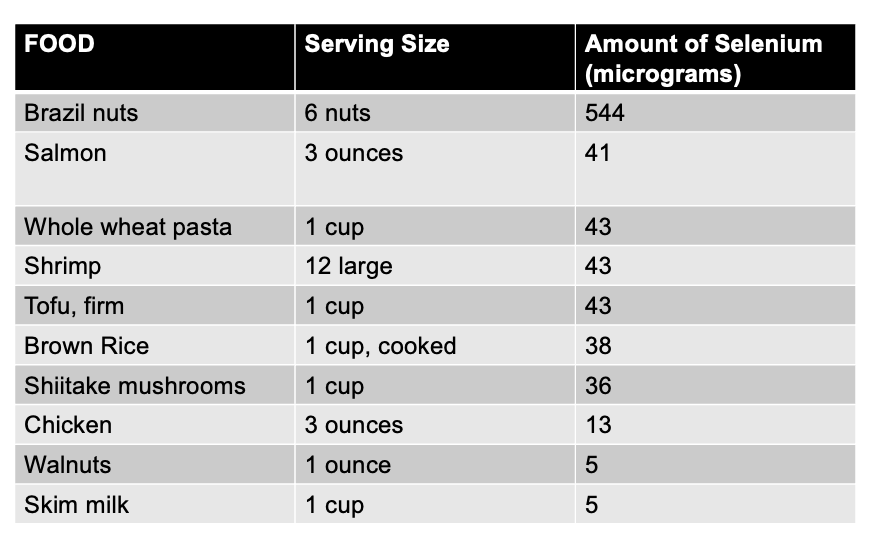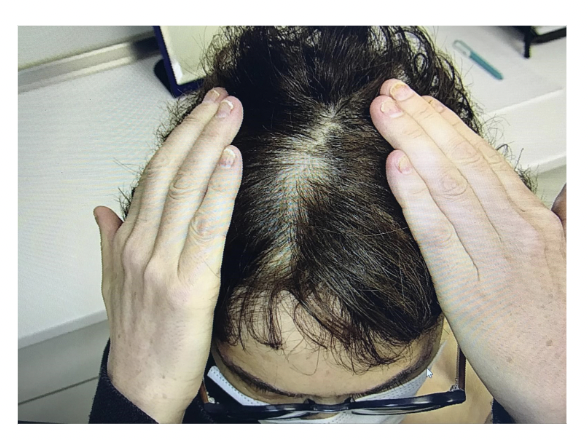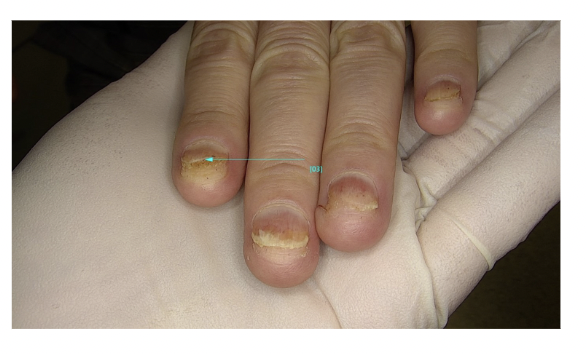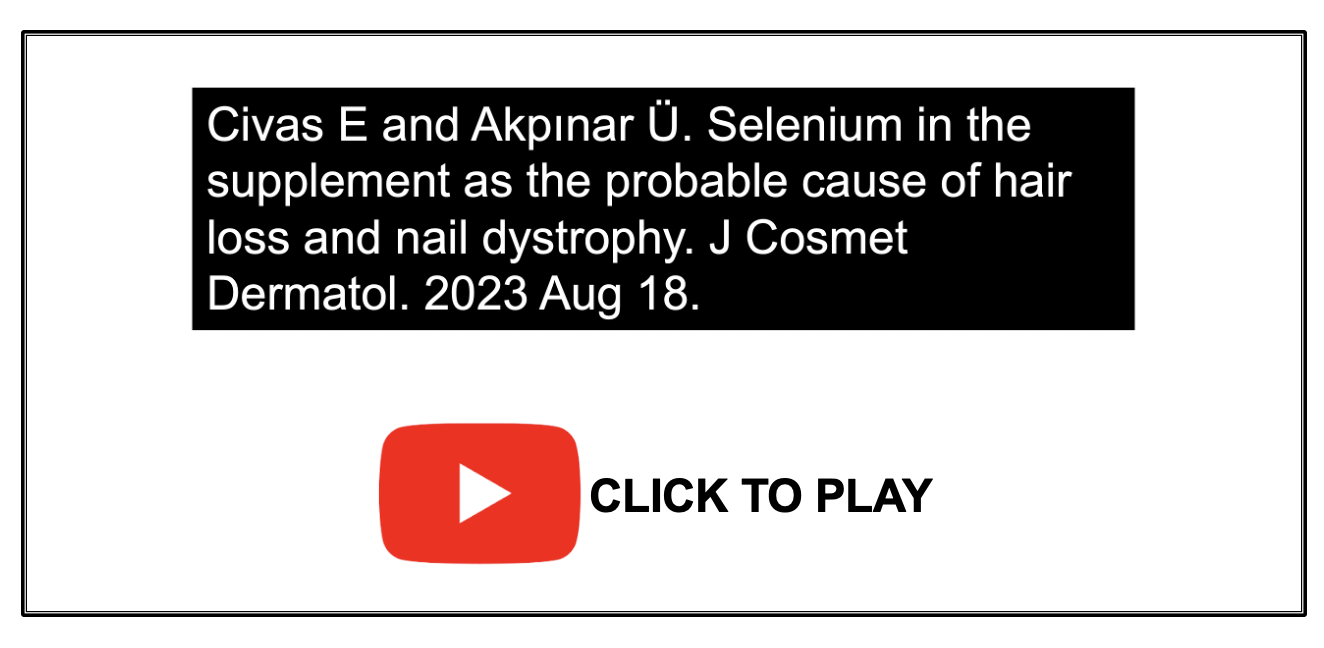Selenium Toxicity Causing Hair Loss
New Report Highlights Selenium Containing Supplements and Food As a Potential Cause of Hair Loss
Selenium is an essential mineral. As humans, we need to get our selenium requirement from foods. This element is a cofactor of many enzymes, for example, glutathione peroxidase or thioredoxin reductase. It plays a key role in helping block oxidative stress.
The recommended daily allowance of selenium is 55 micrograms. It is often said that humans should avoid going over 400 micrograms of selenium to avoid toxicity.
Symptoms of chronic selenium toxicity (known as chronic “selenosis”) include nausea, vomiting, weakness, fatigue, abnormalities of the nervous system (such as peripheral paraesthesia, hyper-reflexia, pain in the extremities) foul breath (often said to resemble ‘garlic breath’). Specific dermatologic conditions associated with selenium toxicity include nail discoloration, brittleness, nail loss, blistered and ulcerated skin and hair loss.
A few years ago, we reviewed an important report from the Archives of Internal Medicine documenting the effects of selenium toxicity in individuals who received a supplement containing 200 times the dose of selenium that it was supposed to contain.
Foods with Selenium
Certain foods are known to be rich in selenium. For example, Brazil nuts are one of the most potent source of selenium. A single Brazil nut has 95 micrograms of selenium. This is about twice the daily requirement. One can see that a handful of Brazil nuts will easily push one into a concerning range. The amount of selenium in other food is shown here as an example.
In general, the amount of selenium that a person can get in his or her diet (assuming a diverse diet with meat, grains, vegetables, and nuts) is typically sufficient to negate the necessity for supplementation.
Civas and Akpınar, 2023
Authors of a new report describe a patient presenting to their attention with severe hair loss and the nail discoloration and brittleness for the prior 3 months.
The patient had started taking a multivitamin complex (which contained selenium) for the last 4 months. The supplement was taken to protect from the COVID-19 pandemic. Hair loss and nail changes were noted to start about 2 weeks after starting the supplement. The patient also had nausea and weakness. She had generalized itching on her body and even on her scalp. The patient reported that she had lost nearly half of her hair.
During dermatologic examination, the hair pull test was said to be positive. The nails of the hands were found to be yellowish in color. There was subungual hyperkeratosis in some nails and onycholysis. Proximal erythronychia were prominent. Nails scrapings were negative for fungus.
The patient had blood tests. Most labs done were normal. However, her selenium level was 1300 μg/L (normal range is 23–190 μg/L).
Further questioning revealed the patient was taking 150 micrograms of selenium every day. The authors could not account for the high selenium blood tests with these supplements alone. After asking about the patient’s diet, it was discovered that she has been eating nuts of different kinds in one or two handful amount every day. She could not describe the nuts which she has consumed because she had bought them from an open market. The authors calculated that it was likely around 800 to 1000 micrograms per day.
Hair loss associated with high selenium levels. Civas E and Akpınar Ü Selenium in the supplement as the probable cause of hair loss and nail dystrophy. J Cosmet Dermatol. 2023 Aug 18. Images used with creative commons license.
Nails thickening and onycholysis associated with high selenium levels. Civas E and Akpınar Ü Selenium in the supplement as the probable cause of hair loss and nail dystrophy. J Cosmet Dermatol. 2023 Aug 18. Images used with creative commons license.
Improvement in hair and nails after REDUCING selenium intake. Civas E and Akpınar Ü Selenium in the supplement as the probable cause of hair loss and nail dystrophy. J Cosmet Dermatol. 2023 Aug 18. Images used with creative commons license.
Patient’s Hair and Nails Improved with Reduction in Selenium in the Diet
All in all, the authors felt that the hair loss and nails changes were due to high selenium levels. The authors advised the patient to stop taking the supplements and stop eating nuts.After 6 months, there was an improvement of the nails and hair. Hair loss had stopped and there was an increase in hair density. Yellowish discoloration, subungual hyperkeratosis, and onycholysis were less. Some thickening and yellow discoloration of the nails continued at the time of last review.
These blood levels of selenium are quite high actually. In the MacFarquhar study of 2010, patients had consumed a selenium supplement containing selenium at 200 times the amount it was supposed to. Levels in those patients ranged from 321 to 1500 μg/L, with a mean of 761 ug/L.
The patient in this report had levels of 1300 μg/L. So this is quite high.
Supplements and Foods Need to Be Considered
The authors propose that patients should be warned about sources of high selenium exposure/intake- including through supplements or through diet. Clinicians should keep both sources should also be keep in mind when evaluating patients with hair loss and nail dystrophies
REFERENCES
Civas E and Akpınar Ü Selenium in the supplement as the probable cause of hair loss and nail dystrophy. J Cosmet Dermatol. 2023 Aug 18.
Agency for Toxic Substances and Disease Registry (ATSDR) Toxicologic Profile for Selenium. Atlanta, GA: US Department of Health and Human Services, Public Health Service; 2003.
Institute of Medicine (IOM) Dietary Reference Intakes for Vitamin C, Vitamin E, Selenium, and Carotenoids. Washington, DC: National Academy Press; 2000. Selenium; pp. 284–324.
MacFarquhar JK. Acute Selenium Toxicity Associated With a Dietary Supplement. Arch Intern Med. 2010 Feb 8; 170(3): 256–261.
This article was written by Dr. Jeff Donovan, a Canadian and US board certified dermatologist specializing exclusively in hair loss.






